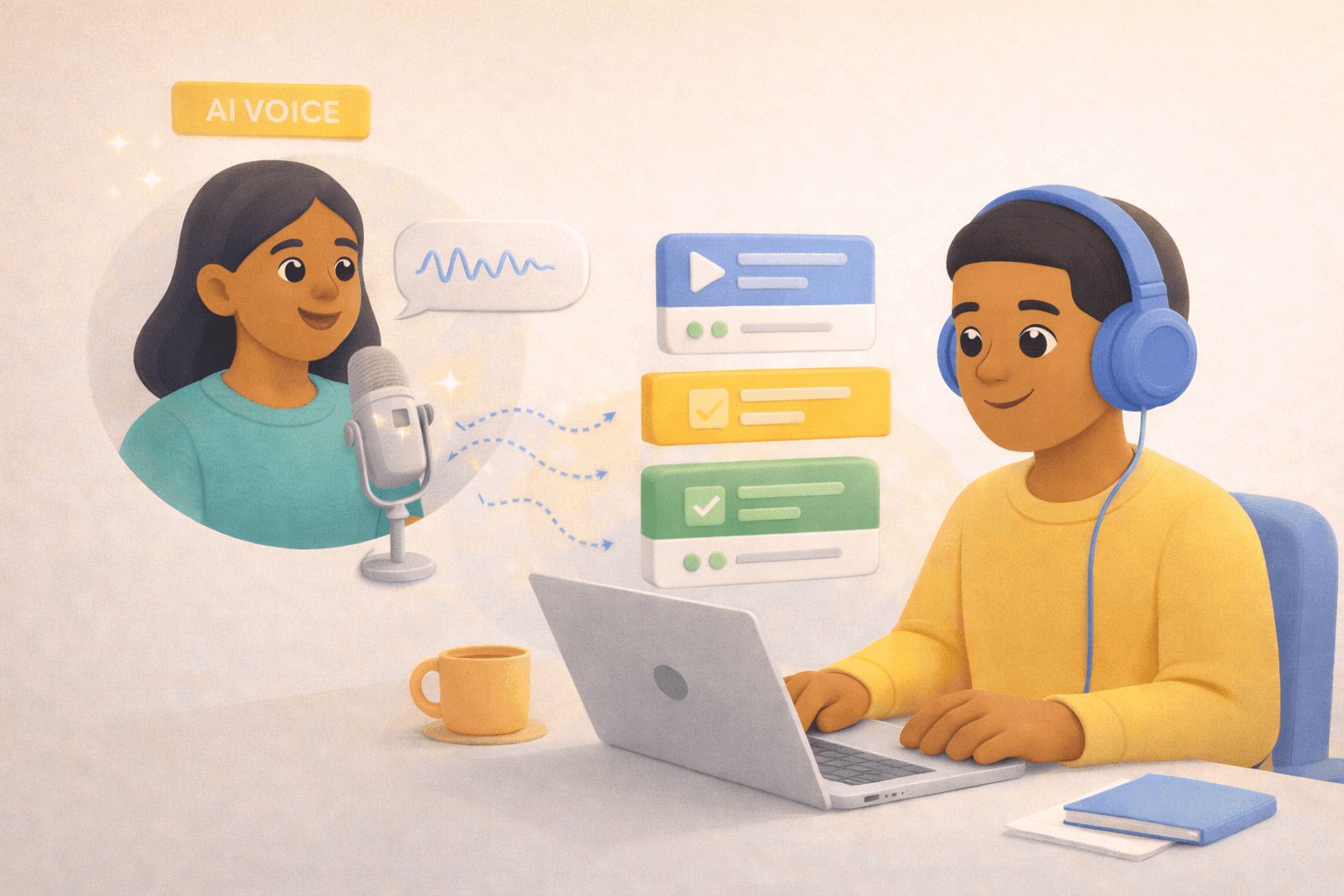Curating knowledge
How to Accelerate Customer Onboarding with Training
Efficient customer onboarding is not just about introducing users to your product; it’s about empowering them to derive value quickly and effortlessly. We’ll explore the elements of customer onboarding training, and offer practical strategies to help you streamline the process. We’ll also discuss key components of a successful customer onboarding program, common pitfalls to avoid, and how to measure success.

Ryan Macpherson
Jun 8, 2024



Editor:
Stephanie Chan
What is Customer Onboarding?
The customer onboarding journey is the initial phase of a customer’s journey where they are introduced to your product. A smooth transition from the sales team to the onboarding team, facilitated by effective onboarding software, is crucial to solidify the customer’s belief in the product and ensure a seamless experience. It’s about guiding them through the setup, configuration, and initial usage, ensuring they derive value quickly. Introducing customer onboarding tools can further streamline this process. This makes customer onboarding important as it sets customers up for success and increases engagement. A well-designed customer onboarding program can have numerous benefits for both your customer and your organization. Therefore, having a customer onboarding strategy is crucial to ensure a positive and effective onboarding experience. A poor customer onboarding program, however, can result in user resistance and churn.
The Benefits of Effective Training in the Customer Onboarding Process
New customers are crucial to your business, and creating a positive onboarding experience for them is essential for educating them about the product and increasing engagement. An effective onboarding training program is crucial in customer onboarding, providing users with the knowledge, skills, and confidence to use your product effectively.
A well-structured onboarding training program significantly enhances the customer onboarding experience.
Here’s how training contributes to onboarding:
Accelerated product adoption and proficiency: Impactful training equips customers with the skills to quickly and effectively use your product. When customers understand how to navigate and integrate your product into their workflows, they can achieve their goals faster and realize its value sooner.
Increased customer satisfaction and retention: Effective training boosts customer confidence and satisfaction with your product. Satisfied customers are more likely to remain loyal, leading to higher retention rates. Customer success teams play a vital role in ensuring this satisfaction and retention by addressing underlying problems and preventing overall customer dissatisfaction.
Reduced support costs and customer churn: Well-trained customers encounter fewer problems and are more likely to resolve issues independently, leading to a decrease in support requests. Additionally, comprehensive training can lead to minimized customer frustration and confusion, therefore reducing churn.
Strategies for Developing Effective Onboarding Training: Best Practices
Creating a successful customer onboarding training program requires thoughtful planning and execution. Implementing best practices customer onboarding can help create a solid onboarding experience by teaching the value of your product or service and using templates to set customers up for success. Here are some strategies to consider:
Customer segmentation: Your customers are not the same, and a standardized training approach often falls short. By segmenting customers based on factors such as their roles, industries, and needs, you can tailor programs to address specific goals. For example, new users may be given introductory sessions, whereas advanced users may benefit from advanced tutorials to maximize product usage.
Utilizing a blended learning approach: This approach combines multiple training formats to cater to different learning preferences. An example of such an approach may include combining personalized group sessions tailored to address specific customer needs with e-learning modules that users can access at their own pace.
Engagement through gamification: Gamification motivates users through incorporating game-like elements into training. Techniques include rewarding users with points or badges for completing training modules or achieving milestones, or using quizzes to assess comprehension.
Understanding the customer onboarding journey is essential for creating a seamless experience.
Keeping customers engaged through continuous and interactive communication, such as email, SMS, in-app notifications, and telephone calls, is crucial. An onboarding specialist can play a key role in ensuring a welcoming experience and a deep understanding of customers to maintain their engagement.
By implementing the above strategies, you can develop an effective onboarding program that not only educates your customers but also engages them, resulting in better product adoption and overall customer success.
Key Components of Successful Customer Onboarding Training Programs
Here are the key components that contribute to the success of an effective customer onboarding training program using onboarding software:
Using a customer onboarding checklist can ensure all key components are covered and help manage the many steps of customer onboarding while keeping track of meeting customer onboarding goals. Customer onboarding tools can further enhance this process by providing structured and automated solutions.
Incorporating a customer onboarding template can streamline the onboarding process and ensure all key components are covered, from the welcome email to the overall engagement strategy.
Clear learning objectives: Establishing specific, measurable goals to guide program development and assessment. Clear objectives help to:
Define the skills and knowledge users should acquire;
Provide a focused path for content creation; and
Allow for the evaluation of training effectiveness by measuring goal achievement.
For example, an objective might be: “Upon completion, users should be able to navigate the product’s dashboard and generate reports.” This clarity ensures trainers and learners know what is expected and can work towards these targets.
Interactive content: Instead of passively consuming information, users are more likely to maintain engagement with interactive content. Types of interactive content include product demonstration videos and quizzes that test users’ understanding of the material covered.
Feedback mechanisms: Continuous improvement of your training program is essential, and regular feedback from users is a critical component of this process. Feedback mechanisms may include post-training surveys or tracking users’ performance metrics such as quiz scores and completion rates.
Common Pitfalls to Avoid in Customer Onboarding Training
When designing your customer onboarding training, it’s important to consider the customer journey and leverage onboarding software to ensure a smooth and effective process. Be aware of (and avoid!) these common pitfalls that can hinder your program’s effectiveness:
Customer onboarding tools can significantly enhance the management of the onboarding process. Managing customer onboarding effectively requires the use of tools and platforms to monitor progress, track customer engagement, and determine relevant metrics for customer success.
Lack of personalization: Customers have different needs, goals, and experience levels with your product. Avoid treating them all the same by segmenting your audience and develop customized training modules that address the unique needs and challenges of each segment.
Information overload: Bombarding new users with too much information at once hinders retention. Focus on the most essential information that users need to get started and derive immediate value from your product. Divide training material into smaller, manageable sections for easier digestion.
Relying solely on developer documentation: Developer documentation is often too technical for most end-users, leading to a poor onboarding experience. Use plain language and combine written documentation with visual aids like videos to make training more user-friendly.
Measuring the Success of Your Customer Onboarding Training with the Customer Success Team
Customer onboarding success is crucial for SaaS companies, as it involves measuring and managing the effectiveness of the onboarding software training program. Evaluating your training program is essential to ensure it delivers the intended outcomes. Customer onboarding tools can help streamline this process. Evaluation involves tracking key metrics and analyzing data, so you can pinpoint areas for improvement and make informed decisions to enhance the training experience.
To provide inspiration and demonstrate the flexibility of onboarding experiences across different industries, consider exploring various customer onboarding examples.
Here are some key metrics to track:
Time to First Value (TTFV): The TTFV refers to the time it takes for a customer to realize their first significant benefit from using your product. A shorter TTFV suggests that the training is effective in accelerating product adoption and helping customers reach their goals faster.
Customer Satisfaction Scores (CSAT): This metric provides insights into how users feel about the training program. CSAT scores can be collected through post-training surveys where customers rate their satisfaction on a scale (e.g. 1 to 5). High CSAT scores indicate that users find the training valuable and enjoyable, while low scores highlight areas needing improvement.
Training completion rates: The completion rate is the percentage of users who finish the entire training program. A high completion rate suggests that the training is engaging and that users are motivated to complete it, while a low completion rate may indicate that the training is too lengthy, complicated, or unengaging.
Maximize onboarding success with Coassemble: A Customer Onboarding Platform
Unlock the power of Coassemble, a customer onboarding platform with advanced onboarding software, for all your onboarding training needs. Benefit from a cost-effective solution, seamless implementation, customizable branding options, and rapid course creation capabilities. Additionally, access a variety of customer onboarding templates, including checklists, emails, training resources, and project communication plans, to help companies plan and implement a customer-centric onboarding process.
Leverage customer onboarding tools to enhance the onboarding experience. The customer onboarding journey is streamlined with Coassemble’s comprehensive tools and resources.
Explore Coassemble for free today to revolutionize your training experience and drive success for your customers.
Read More
Join the knowledge revolution today
Unlock knowledge. Boost engagement. Drive results
No credit card required

Join the knowledge revolution today
Unlock knowledge. Boost engagement. Drive results
No credit card required

Join the knowledge revolution today
Unlock knowledge. Boost engagement. Drive results
No credit card required




